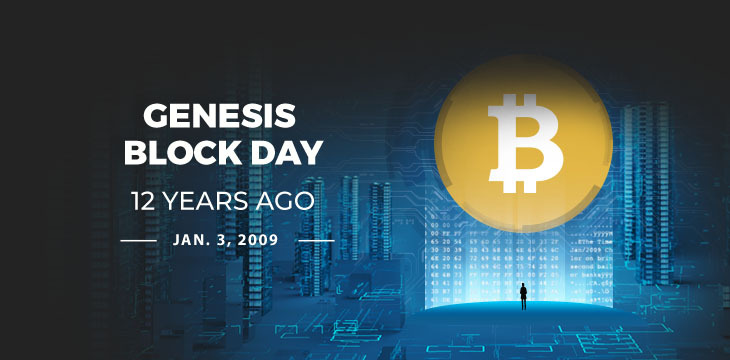|
Getting your Trinity Audio player ready...
|
Happy New Year, and Happy 12th Genesis Block anniversary! The Genesis Block timestamps the beginning of the Bitcoin blockchain—and since Bitcoin SV (BSV) is the only blockchain that still maintains Bitcoin’s original protocol, it’s BSV’s holiday alone to celebrate.
The Bitcoin Genesis Block is also known as Block #0, and was not “mined” in the way subsequent Bitcoin blocks were. Instead it was constructed by creator Satoshi Nakamoto as a reference point and hard coded into the protocol software, using a key value pre-computed externally. Bitcoin Block #1, mined six days later using the protocol’s proof-of-work algorithm after Satoshi released the software to the public, marks the true “beginning” of Bitcoin as we know it today. You can read more details and trivia on Bitcoin’s birth story here.
Satoshi’s easter egg
We can’t talk about the Bitcoin Genesis Block without mentioning the now-famous “easter egg” Satoshi coded into the original 50 Bitcoin coinbase. It reads:
The Times 03/Jan/2009 Chancellor on brink of second bailout for banks.
If only government bank bailouts were our biggest economic problem in 2021! Satoshi is believed to have included this line as a real-world timestamp to mark Bitcoin’s beginning, and also as a call for accountability and transparency. Bitcoin was created on capitalist principles (sadly lacking in today’s economy) with built-in incentives to reflect them. It is neither anti-bank nor anti-government, but exists on a global “ledger of truth” that would make their decisions and actions more honest, since they’re recorded on the blockchain forever.
On the Genesis Block’s 10th anniversary—in 2019 and less than two months after Bitcoin BSV formally declared its independence—BSV mined a transaction block 103MB in size. This was the first ever Bitcoin block to top 100MB, making a mockery of those who claimed for years that the network couldn’t scale.
Restoring the original Bitcoin protocol
Today there are still other blockchains that claim or use the “Bitcoin name.” The best-known are BTC and BCH. However neither of those chains follow the original protocol rules and may even be using Bitcoin’s 12-year long transaction database illegally. BSV is the only true version of Bitcoin still in existence today.
BTC officially separated from the Bitcoin blockchain when its developers introduced SegWit, or “segregated witness” that separated digital signatures from the transaction block data. They also decided to keep transaction blocks limited to 1-4MB in size, and move all but large payments to separate networks (still in development) outside the blockchain.
These changes not only made BTC transactions unfeasibly expensive, but also broke the ability to legally prove Bitcoin ownership, and many transactions. That may have been intentional, or it may have stemmed from a poor understanding of what Bitcoin was supposed to be. It was never meant for “anonymous” payments and it was never meant to be “digital gold,” traded but never moved. Bitcoin was designed to be used for millions of transactions a day, and it was designed to be auditable. Without these factors, Bitcoin has no place in the world.
BCH avoided SegWit and tiny blocks, but it had its own plans to change the protocol. So in November 2018, those wishing to keep only the original rules bid them farewell as well. Thus was Bitcoin Satoshi Vision, Bitcoin SV, or BSV, born. BSV developers restored the Bitcoin protocol software as it was originally released in February 2020 with the public release of “Genesis.” Bitcoin today, as BSV, has no transaction block limits and can handle transactions for around 1/100 of a U.S. cent. Its data processing capabilities are literally unbounded, and the network could one day replace the Internet itself.
With that in mind, it’s on to Bitcoin’s proper birthday, which happens in six days’ time. As we mark these anniversaries, it’s important to reflect on what Bitcoin is supposed to be for, and why its original rules matter.

 12-07-2025
12-07-2025 





